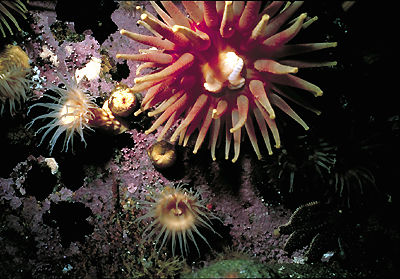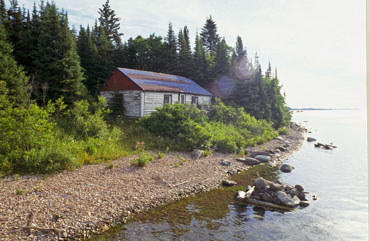Tuktut Nogait National Park (established in 1998, 18 181 km2) was created through the efforts of the Inuit of Paulatuk, NWT. They wanted a national park to help protect the calving grounds of the Bluenose herd of barren-ground caribou, a game animal essential to their way of life. The agreement to establish the park in the Inuvialuit Settlement Area was signed in 1996, and the park's formal establishment occurred 2 years later. In 2005, Tuktut Nogait was expanded southward with the addition of a small portion in the Sahtu Settlement Area. When Nunavut was created in 1999, the national park's eastern boundary was incorporated into the NWT/Nunavut border. Most of its northern boundary runs parallel to the Amundsen Gulf, which lies 20 km to the north. The name Tuktut Nogait means "caribou calves" in Inuvialuktun.
Natural History
Located in the Melville Hills 40 km east of Paulatuk, Tuktut Nogait is a rolling tundra landscape deeply incised by the Hornaday, Brock and Roscoe rivers. Areas of higher elevation in the park escaped glaciation during the last Ice Age, one of only 2 areas of the Arctic that did so. Other than caribou, the area supports muskoxen, wolves, foxes and great numbers of birds of prey (hawks, falcons and eagles). The largest predator is the grizzly bear. From 1968-86, Arctic char was plentiful enough in the Hornaday River system to support a commercial fishery. The Hornaday continues to support a subsistence Arctic char fishery for the residents of Paulatuk. Other fish species include grayling, lake trout and whitefish.
Human History
There is evidence along the rivers in Tuktut Nogait of human occupation over the last 3000 years. Today, the Mackenzie Inuit continue to live a traditional lifestyle of hunting, fishing and trapping. Land claim agreements set out the regional population's harvesting rights within the park's boundaries.
The Oblate missionary, Father Émile Petitot, was the first European to explore the area. In 1868, he descended most of the length of the Hornaday River, which he called Rivière la Roncière-le Noury, after a French baron and admiral. This name survives at La Roncière Falls located in the northwestern part of the national park on the Hornaday River. It is likely that arctic fox trappers were active here in the 1920s but except for the Inuit, few have visited this remote part of the Arctic. Tuktut Nogait National Park remains a pristine wilderness so visitors must be completely self-sufficient when visiting it. The park can be accessed by chartered boat or on foot from Paulatuk, or by chartered aircraft from Inuvik or Norman Wells.

 Share on Facebook
Share on Facebook Share on X
Share on X Share by Email
Share by Email Share on Google Classroom
Share on Google Classroom


